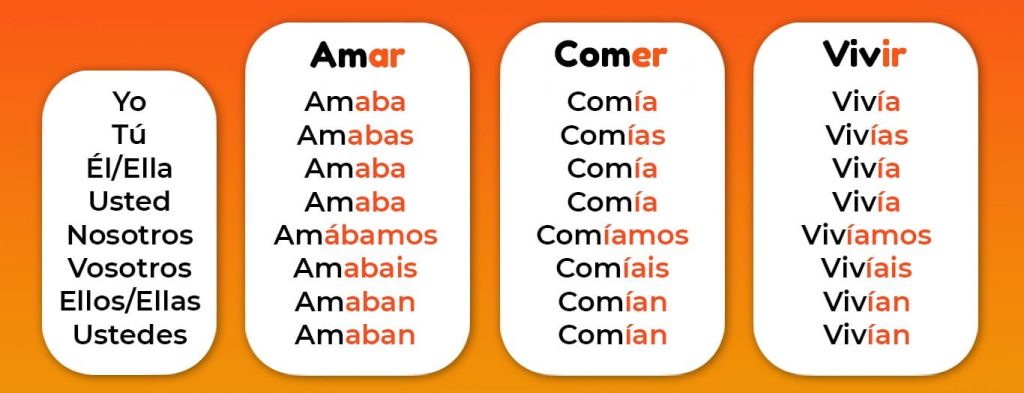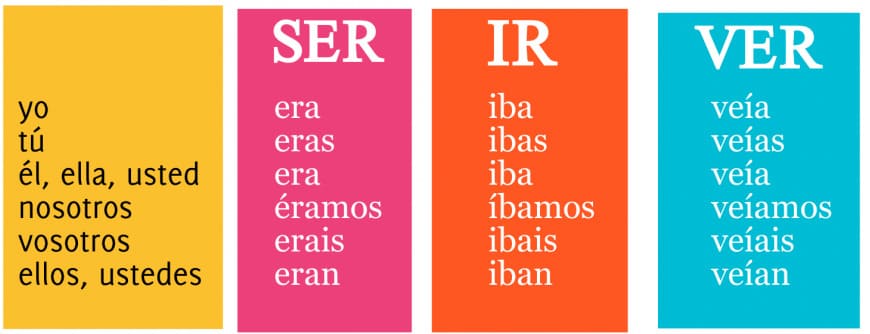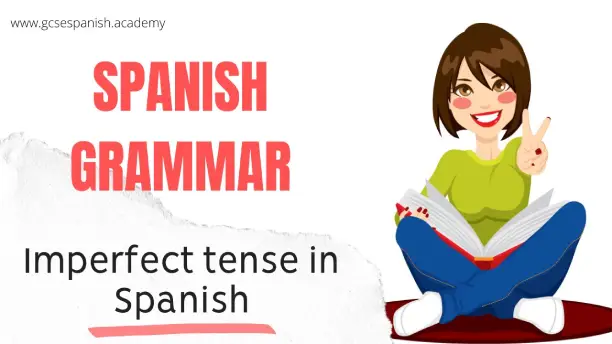The imperfect tense is used, in Spanish, to describe things in the past. It helps you to say what «was happening» and what «you used to do«. Let’s see how it works and how to form it, first with the video below.
The imperfect tense in Spanish
I was going/I used to go: the imperfect tense
To form the regular verbs in the imperfect tense, find the stem and then add the endings below, depending on if the verbs end in -AR, -ER or -IR.

Notice that «Yo» (I) form and the «Él/Ella» (he, she, it) form look the same, so you will have to use the context, or use the subject or subject pronoun, to tell which is which:
Yo, cuando era joven, hacía mucho deporte (When I was young, I used to do a lot of sport).
Mi padre, cuando era joven, hacía mucho deporte (My father used to do a lot of sport when he was young).
Irregular verbs in the imperfect tense
Good news! There are only three irregular verbs in the imperfect tense: «SER» (to be), «IR» (to go), and «VER» (to see/watch).

As you can see, these are the only three verbs that don’t follow the pattern. SER and IR are very irregular, but VER is almost regular, just add the «-er» endings onto «ve-«, e.g. «veía».
Mi padre era pintor (My dad was a painter).
Los veranos iba a muchos conciertos (In summer I went/used to go to lots of concerts).
Normalmente veíamos la tele todas las noches (we normally watched/used to watch TV every night).
Spanish verb SOLER
You can also say what you used to do using the imperfect tense of the verb «soler» and then an infinitive:
Solíamos viajar mucho (we used to travel a lot).
Mi padre solía hacer mucho deporte (My father used to do a lot of sport).
En verano solía ir a muchos concierto (In summer I used to go to lots of concerts).
HABÍA: there was/there were
In the present tense «hay» means «there is» or «there are«. The imperfect form of «hay» is «había», which means «there was» or «there were«. It stays the same, regardless of whether the noun is singular or plural.
Había un gato en el árbol (there was a cat in the tree).
Siempre había muchos nichos en el parque (There were always lots of children there).
